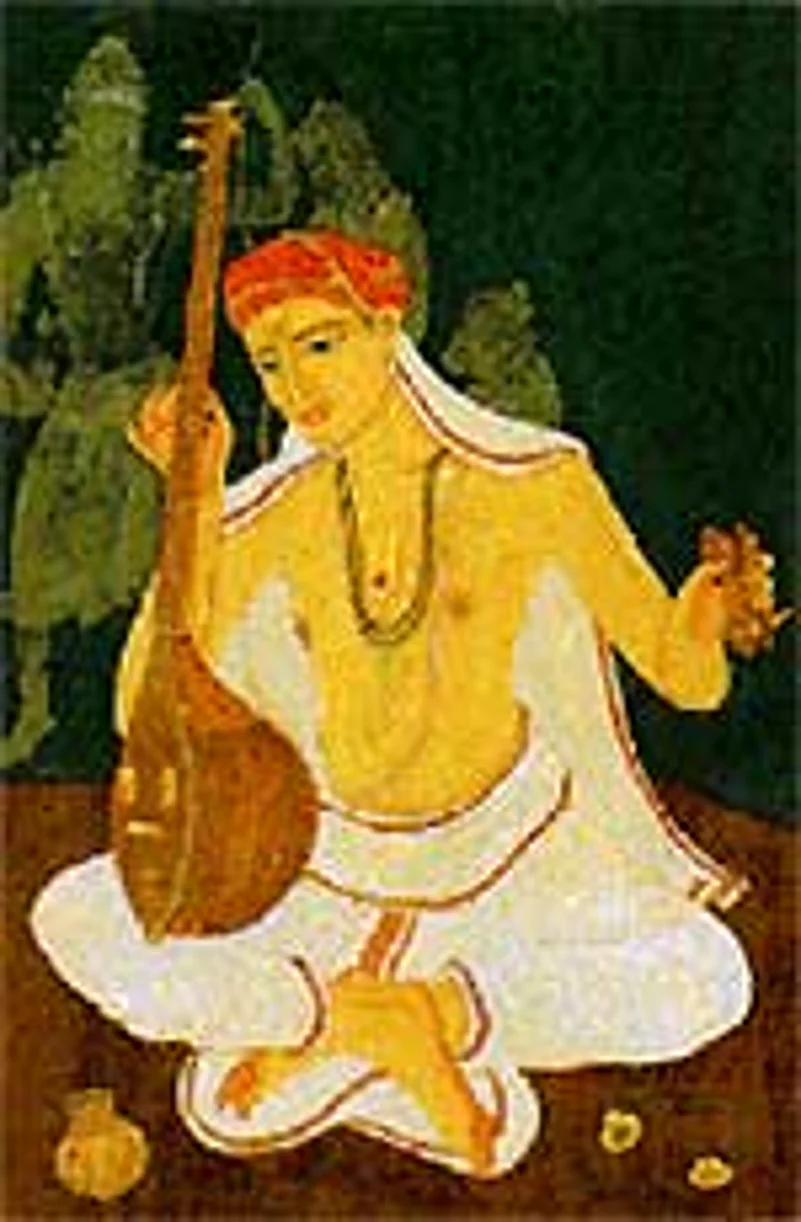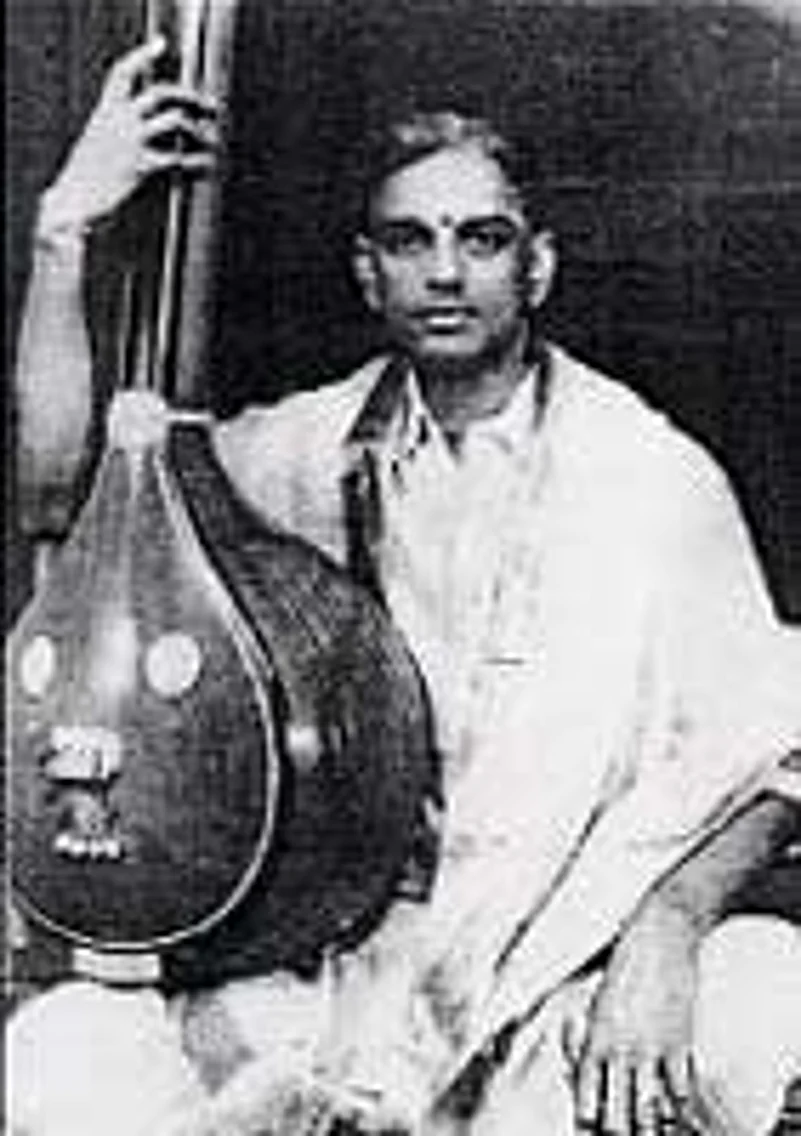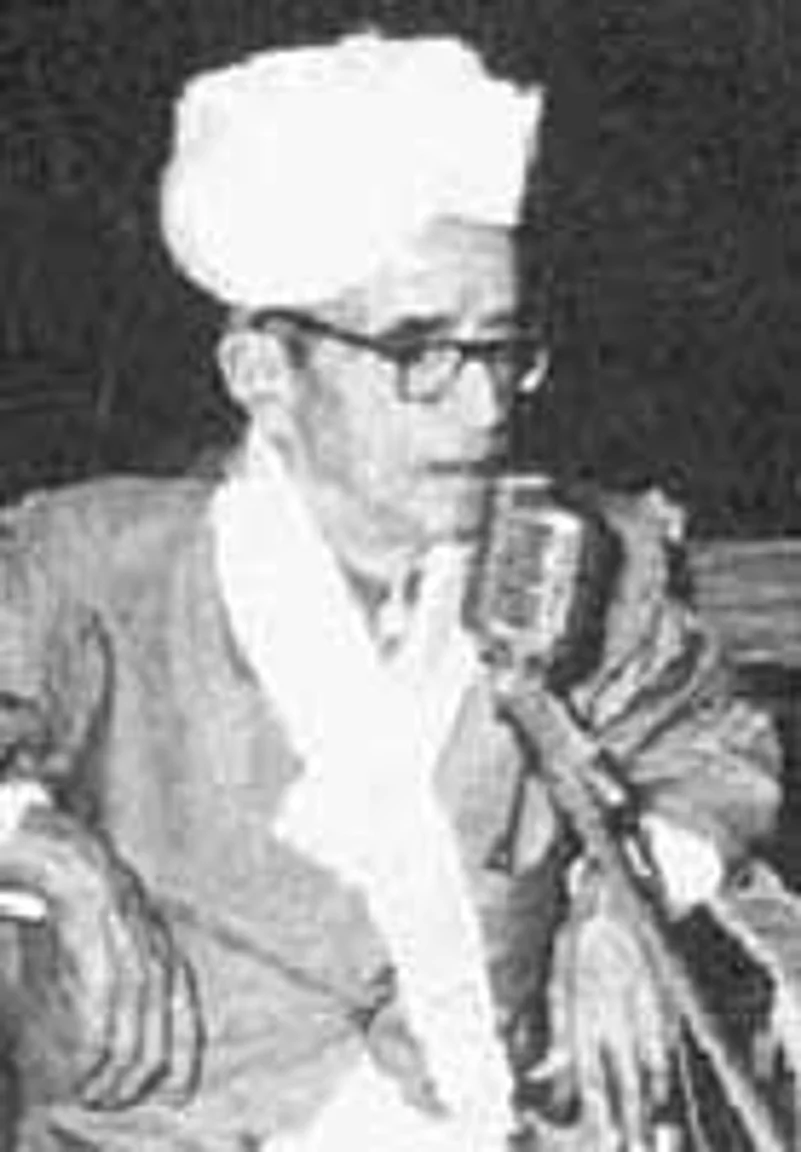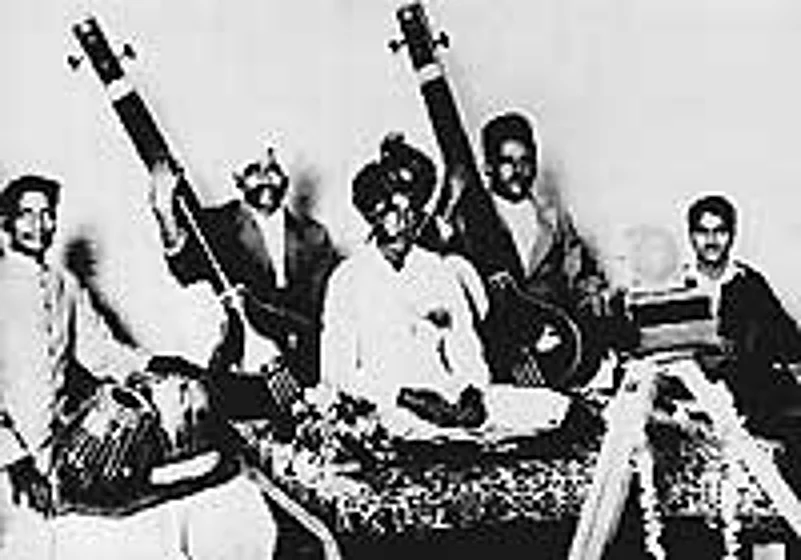
The modern concert format (kaccheri paddhati) as we know it evolved in the earlier part of the 20thcentury. The format consists of several compositional varieties like varnams, kritis, pallavis, padams,javalis, tiruppugazhs and so on. However, in addition to these largely preset parts of the concert, there arealso creative and improvisational forms, namely raga alapana (expositions of raga without rhythm), neraval(extempore melodic and rhythmic variations of specific lines in a composition) and swarakalpana (singing ofsolfa or swara syllables, often with rhythmic embellishments). Both of these components of modern Carnaticmusic owe much to Tyagaraja, undoubtedly the most influential vaggeyakara or composer in the annals ofCarnatic music.
Up to the late 19th century, the primary location for performances of art music was at the abodes of kingsand other rich patrons. These concerts were centered around ragam-tanam-pallavis, elaborate exercises inmusical creativity usually in major ragas like Sankarabharanam, Todi and Bhairavi. In contrast to these werethe more widely prevalent devotional musical forms, such as bhajanas, where music was subservient to lyricsand the emphasis was largely on Bhakti.
However, beginning in the 16th century, composers like Muthu Tandavar and Margadarsi Sesha Ayyangar hadexperimented with the kriti format and the characteristic pallavi-anupallavi-charanam structure, one that wasfollowed in Kshetragna’s padas. By the late eighteenth century, this format had been perfected by the "trinity"- Tyagaraja, Muthuswami Dikshitar and Syama Sastry - who combined the best of both the lyrical and pallavitraditions mentioned above.
Tyagaraja’s outstanding contribution to the advancement of the kriti format was the introduction of thesangati (lit. coming together) - a set of variations on a theme, gradually unfolding the melodicpotential of the musical phrase. Largely set in the madhyamakala (middle tempo), Tyagaraja’s kritis weremore appropriate for the modern concert paddhati. Vidwan G. N. Balasubramaniam, for example, observed duringhis presidential address at the 32nd conference of the Music Academy, that nearly 60% of Tyagaraja’s kritisare composed in the madhyama kala (middle tempo) and this speed "seems to be the best for both the lay andthe learned listeners."

Tyagaraja’s compositions also spanned a range of complexity, from simple unchhavariti kirtanas that hesang during his ritual morning walk seeking alms, to elaborate pancharatna kritis or chauka kala kritis like ORanga sayi or Kaddanu Variki. Musicians can therefore structure their concerts around compositionsof Tyagaraja (and several other composers, many of whom followed in his footsteps) involving multiple ragas,talas and tempos.
This variety was made possible through the virtual explosion of new ragas in the 18th century followingVenkatamakhi’s celebrated Chaturdandi Prakasika (ca. 1660) and his 72 melakarta scheme ofclassification. Following and furthering the work of Venkatamakhi, Govinda (Govindacharya), in his SangrahaChudamani (late 17th - early 18th century) introduced the sampoorna melakarta scheme as well as lakshanasfor 294 janya ragas, many of which were unknown. Where Purandaradasa and musicians of his generation hadperhaps a couple of dozen ragas to work with, Tyagaraja could experiment with hundreds.
Indeed, Tyagaraja seems to have adopted composing in new ragas as one of the aims of his musical career.The (approximately) 700 known kritis of Tyagaraja feature 212 ragas; 121 of these ragas have only one kriti inthem. He was the first to compose kritis in "about 66 ragas". His enthusiasm for such ragas can be seenfrom the fact that even among the last few kritis that he is believed to have composed, three are in newragas: Vagadeeswari (paramatmudu), Ganavaridhi (daya juchutakidira) and Manohari (paritapamuganiyadina).
By composing excellent kritis, Tyagaraja gave life to these new ragas. From being mere descriptions in abook (with at best a lakshana gita), these scales became full-fledged ragas capable of being sung elaboratelyin concerts. Tyagaraja, it must be remembered, was not only a composer but also a musician par excellence.Prof. P. Sambamoorthy narrates a story that sheds some light about Tyagaraja’s prowess as a performer. WhenTyagaraja visited Madras on his way to Tirupati, he stayed at the house of Kovur Sundara Mudaliar, a musicalpatron. Madras, at that time, was on its way to becoming a musical center. For six evenings in succession,Tyagaraja sang the raga Devagandhari elaborately following it up with one of his compositions in the raga.This incident testifies to the creative ability or manodharma of Tyagaraja, the musician.

During the period before the trinity, because of the fact that the focus in musical performances was onragam tanam pallavis, mainly featuring a limited number of major ragas, "minor ragas" were not explored.The explosion of kritis by the trinity and their musical followers allowed for the exploration, andcodification of such exploration, in a much larger number of ragas.
However, in many minor ragas, Tyagaraja’s compositions provide the inspiration for furtherexperimentation and elaboration. Latter day composers have created kritis in these ragas and musicians havesung or played elaborate alapanas, neravals or swarakalpanas. Several of these ragas have been used in filmmusic as well. Some examples are provided in our article on the SouthAsia Women’s Forum.
Tyagaraja pioneered the use of several melakarta ragas like Ramapriya (52), Dhenuka (9), Kiravani (21) andChakravakam (16). "Tamizh Thatha" U. V. Swaminatha Iyer recounts the incident when Maha Vaidhyanatha Iyersang Chakravakam elaborately to the puzzlement of the many famous musicians. Reflecting the fact that MahaVaidhyanatha Iyer was a grand disciple of Tyagaraja, Peria Vaithi, one of the prominent musicians present,referred to this raga as "Tanjavur sangati". In addition, Tyagaraja also composed in many vivadi melassuch as Naganandini (30), Jhankaradhvani (19), Gangeyabhushani (33), Manavati (5) and Vagadeeswari (34).
Tyagaraja also invented new kinds of ragas. Prior to Tyagaraja, as a rule, all ragas had at least 5 swarasin the arohana and avarohana. Tyagaraja invented two ragas, both of which have only 4 notes in the arohana:Vivardhani and Navarasa Kanada. However, to "make up", both have 6 notes in the avarohana. Since then,composers like Balamuralikrishna have experimented with ragas that have only 4 notes in both arohana andavarohana.
One important reason behind Tyagaraja’s lasting influence on Carnatic music is the role played by hismany disciples in popularizing his music, and thus in popularizing the new ragas that Tyagaraja pioneered.Some of them have offered their tribute to Tyagaraja in the form of kritis expressing his greatness. Examplesare swamiki in the raga Devagandhari (a favorite of Tyagaraja, as mentioned earlier) composed by hiscousin and disciple Manambucavadi Venkatasubba Iyer, and satguru swamikki in the raga Reetigaulai byRamanathapuram (Poochi) Srinivasa Ayyangar, a disciple of Venkatasubbayyar’s student Patnam Subramania Iyer,and thus a great grand disciple of Tyagaraja.

Finally, it is notable that Tyagaraja’s music captivated even musicians not trained in the Carnaticmusic. For example, the late Ustad Abdul Karim Khan recorded Tyagaraja’s Kharaharapriya kriti, rama neesamanamevaru. Rabindranath Tagore, inspired by some of Tyagaraja’s lavanya rama in the ragaPoornashadjam, composed E ki labanye purna pran.
Classical or art music is what it is because of two factors: a clear set of rules that codify the resultsof extensive experimentation with musical aesthetics, and creativity within these musical rules. A composer’screativity is evident in his or her compositions. The performer’s creativity, on the other hand, isdisplayed during expositions of raga alapana, neraval or swara kalpana. However, this creativity cannot arisefrom a vacuum, but rather from the musical output of earlier performers (teachers, in particular) andcomposers. Thanks to his wonderful compositions, Tyagaraja has been, and for at least the foreseeable futurewill be, the greatest influence on musical creativity and raga music in Carnatic music. For this reason,musicians owe him a great debt of gratitude, as pointed out by S. Pasupathy through this amusing limerick:
"There was a bard of great fame
'Sacrifice-King' was his name
Artists make a living
use his kriti-s for singing
But he gets no fee, true to his name!
(No royalty to a raja? Is it not a shame?)"
Acknowledgments
We acknowledge discussions with Ram Naidu, S. Pasupathy, Geetha Sivaraman and Sumitra Ranganathan. An earlier version of this article, with audio clips, appeared in the SouthAsian Women’s Forum
V. N. Muthukumar is currently at the Department of Physics, Princeton University. M. V. Ramana is currentlyat the Program on Science and Global Security,Princeton University.
















